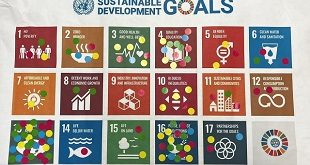
Why Uganda could incur over Shs 800bn in agricultural losses
Kampala, Uganda | RONALD MUSOKE | Uganda risks losing up to Shs 800bn (US$218.3 million) in export revenue if the desert locusts are not halted in the coming weeks, according to the agriculture ministry.
East Africa’s third largest economy earns billions of shillings from maize, cotton, coffee, fruits, vegetables and simsim exports. In 2018, Uganda earned US$ 106.8 million in maize exports, followed with cotton (US$ 44.3 million), fruits and vegetables (US$ 40.6 million) and simsim (US$ 26.6 million).
Vincent Ssempijja, the agriculture minister said on Feb.25 that Uganda is at risk of incurring more losses if locusts decimate a dozen crops that are widely grown in the regions so far invaded.
Uganda which had been locust-free for close to 70 years was attacked on Feb. 09 causing both excitement and apprehension among the country’s population. The much anticipated swarms of desert locusts invaded Uganda from neighbouring Kenya through the northeastern district of Amudat in Karamoja sub-region and they have since been sighted in about 20 districts in Teso, Lango, Acholi and Sebei.
These regions are known to be the leading producers of cereals (maize, wheat, barley, sorghum, and millet), root crops (sweet potatoes and cassava), pulses (beans and pigeon peas) and oil crops (soy beans, simsim and sunflower).
Farmers, however, are yet to record major losses since the locusts invaded the country during the offseason. Uganda has two major cropping seasons. The first one begins in March until June and the second one starts in September until December.
However, on Feb. 18, the Mountain Elgon region of Sebei became the latest area to be invaded by the marauding insects. The swarms entered Bukwo District from Kenya’s West Pokot causing panic among farmers in the sub-region as the locusts covered the main crops –coffee trees, pines, cereals and bananas.
The plantations, according to Bukwo Resident District Commissioner, Tom Chesol, could not be reached by the UPDF soldiers since the gardens are perched on cliffs. Flowering coffee trees were badly damaged as the insects descended southwards to Kween District.
Local government officials said although UPDF soldiers who have been spraying the insects from the ground using hand-held pumps responded, it was not easy to fight the locusts because of the challenging mountainous terrain.
While giving an update to the press on Feb. 25, Ssempijja said new swarms of locusts had entered Uganda from Kenya through Nakabat on Feb.24. He said the recent swarms that entered Uganda have laid millions of eggs and the eggs are now hatching. “Uganda is in grave danger of incurring (agricultural) losses,” he said.
The minister said the eggs have also hatched in the Turkana area in northwestern Kenya from where the hoppers migrated to Uganda in early February. This has put Uganda in acute danger, he said.
Ssempijja said the government in collaboration with her partners – FAO and the Desert Locust Control Organization (DLCO) are taking an all-out offensive approach within the Karamoja, Teso, Acholi, and Lango sub-regions to contain the situation.
Ssempijja said the government is moving fast to enhance surveillance by studying the migration patterns and areas where the desert locusts could be laying eggs. Surveillance and GIS teams will continue to work hand in hand with the support of the UPDF in the region to construct maps of sites where the eggs have been laid. This, he said, will enable the technical staff to survey and monitor the hotspots for any locust outbreak.
The minister said the government had also finally received an aircraft from the Desert Locust Control Organization (DLCO) to start aerial spraying of the marauding insects. The surveillance maps will provide coordinates for the aircraft that will be used in the aerial spraying of the nymphs and immature locusts that will be hatched in the region in less than 14 days.
 The Independent Uganda: You get the Truth we Pay the Price
The Independent Uganda: You get the Truth we Pay the Price



